Abstract
The effect of moisture content on the rates of heat inactivation of enteric viruses in wastewater sludge was determined. The protective effect of raw sludge on poliovirus previously observed (R. L. Ward, C. S. Ashley, and R. H. Moseley, Appl. Environ. Microbiol. 32:339--346, 1976) was found to be greatly enhanced in sludge dewatered by evaporation. Other enteroviruses responded in a similar fashion. This effect did not appear to be due merely to the state of dryness of the sludge samples because in humus-deficient soil, a relatively inert material, the rate of poliovirus inactivation by heat was not significantly altered through dewatering. Instead, this effect appeared to have been caused by protective substances in the sludge, such as detergents, which are concentrated through dewatering. As reported previously (R. L. Ward and C. S. Ashley, Appl. Environ. Microbiol. 34:681-688, 1977; R. L. Ward and C. S. Ashley, Appl. Environ. Microbiol 36:889--897, 1978) raw sludge is not protective of reovirus, but, instead, the ionic detergents in sludge cause the rate of heat inactivation of this virus to be accelerated. Dewatering of sludge, however, was found to partially reverse this virucidal effect. Evidence is presented indicating that this reversal is caused by an unidentified protective substance in sludge also concentrated through dewatering. Finally, it was shown that the effects of raw sludge on heat inactivation of poliovirus and reovirus are greatly reduced by composting, a result that correlated with the degradation of detergents.
Full text
PDF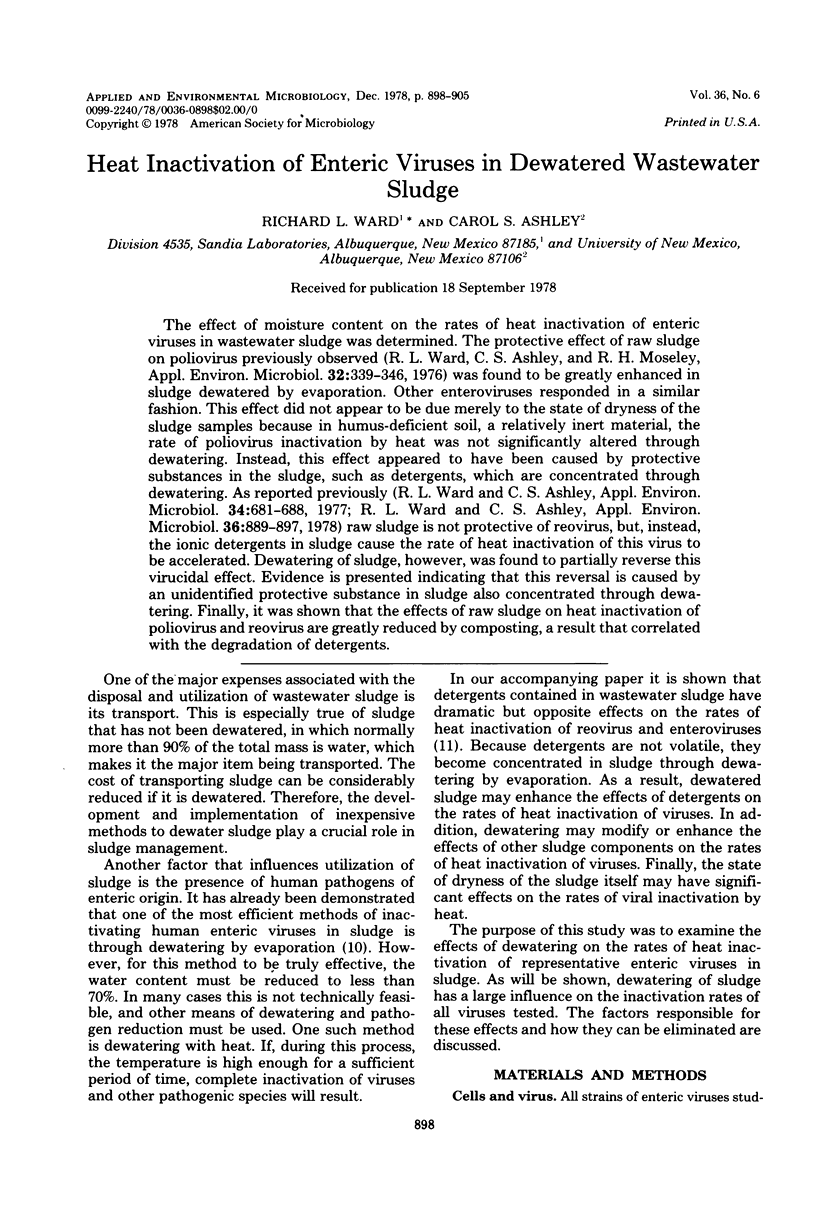
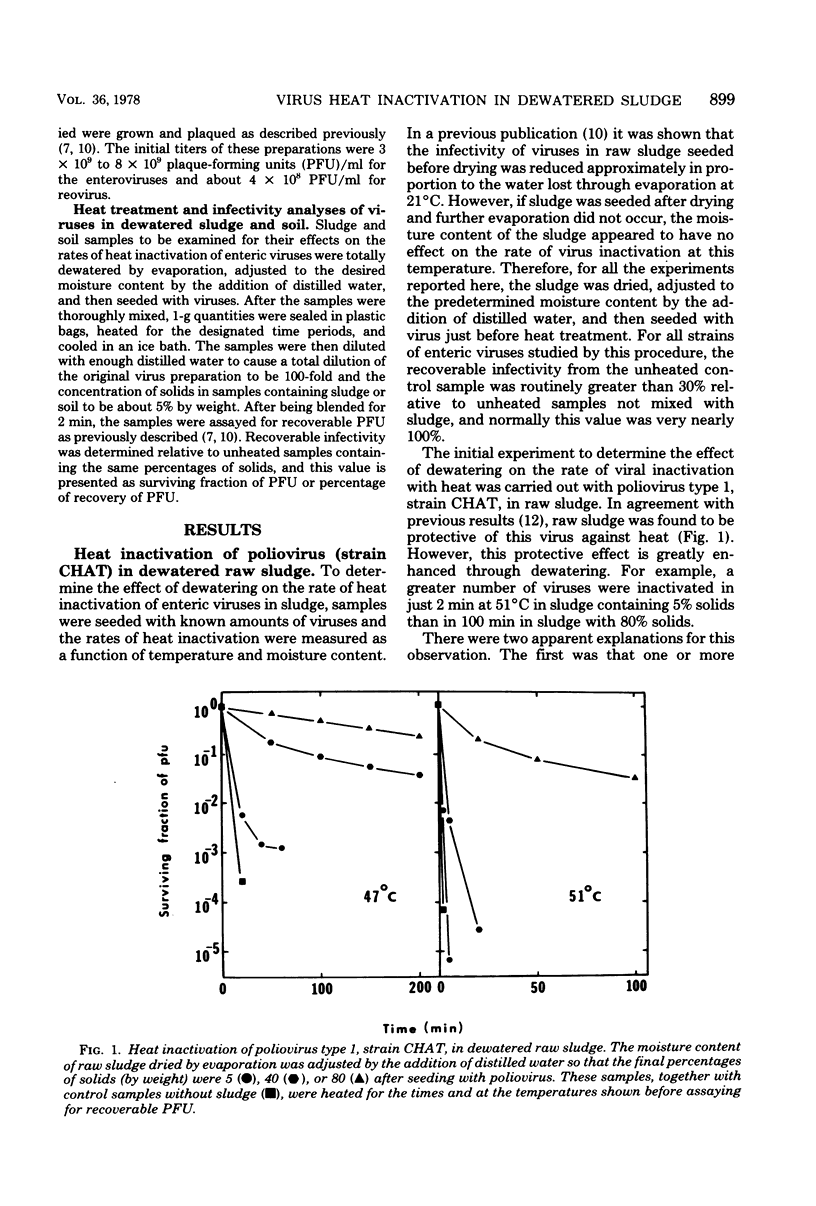
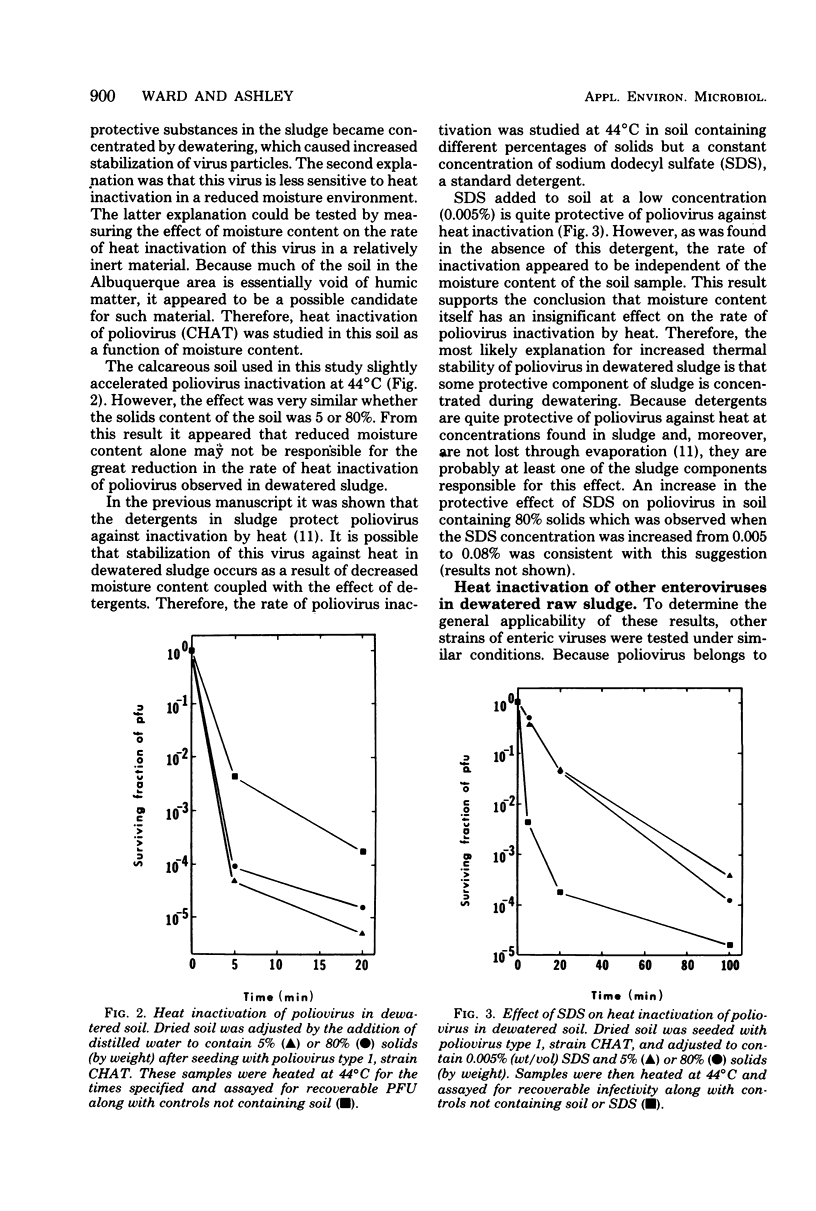
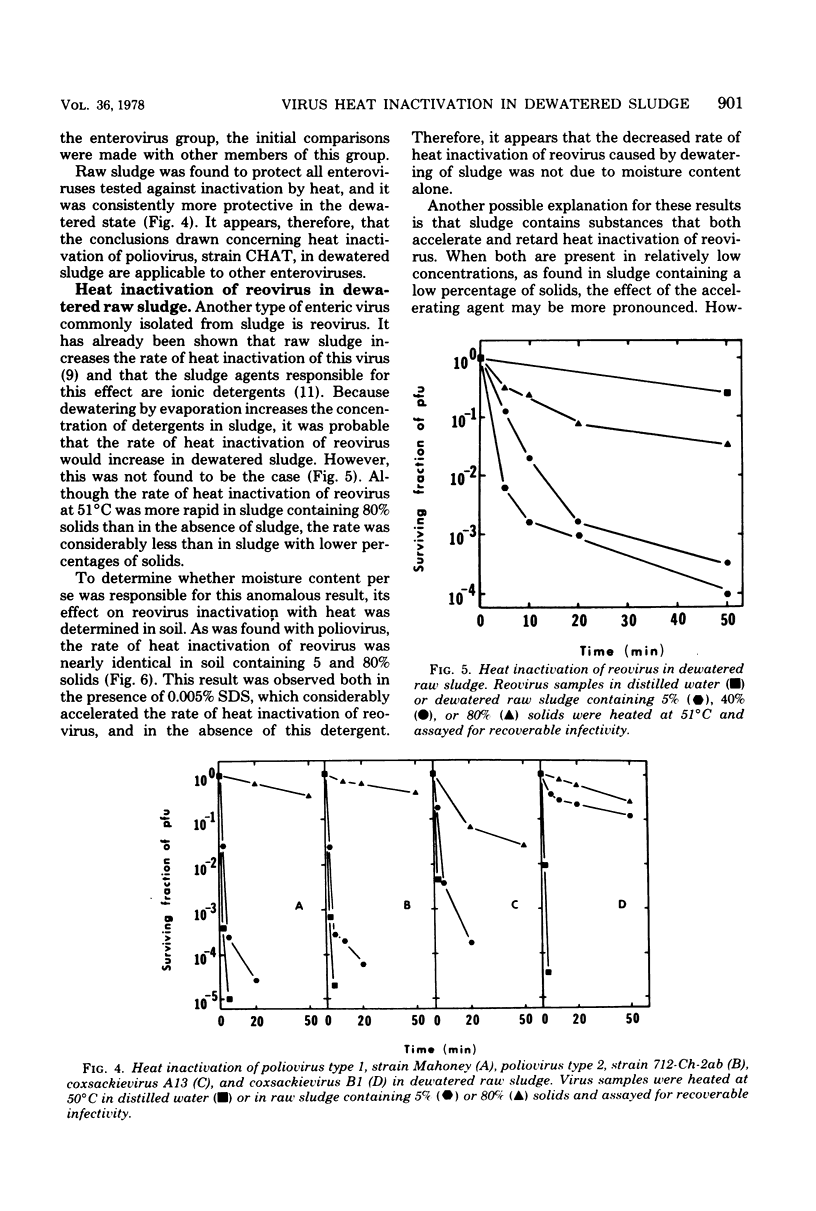
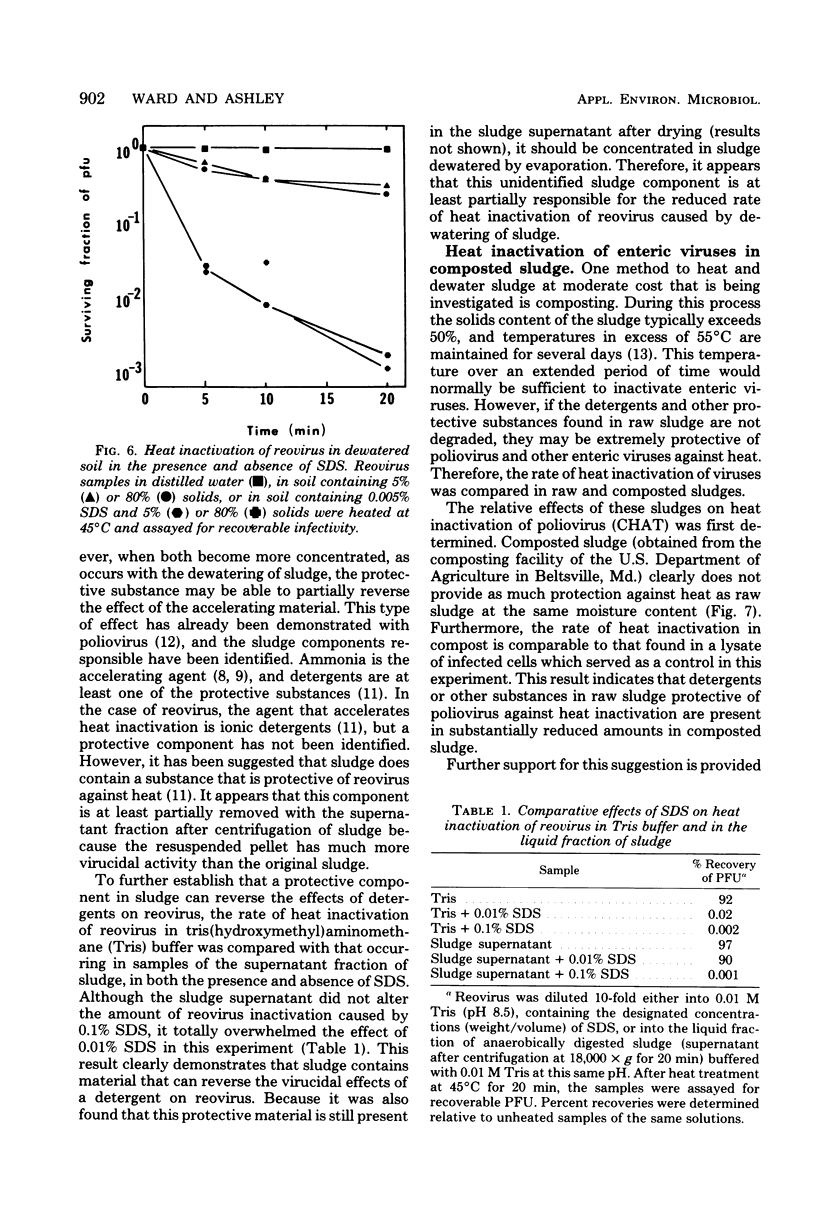
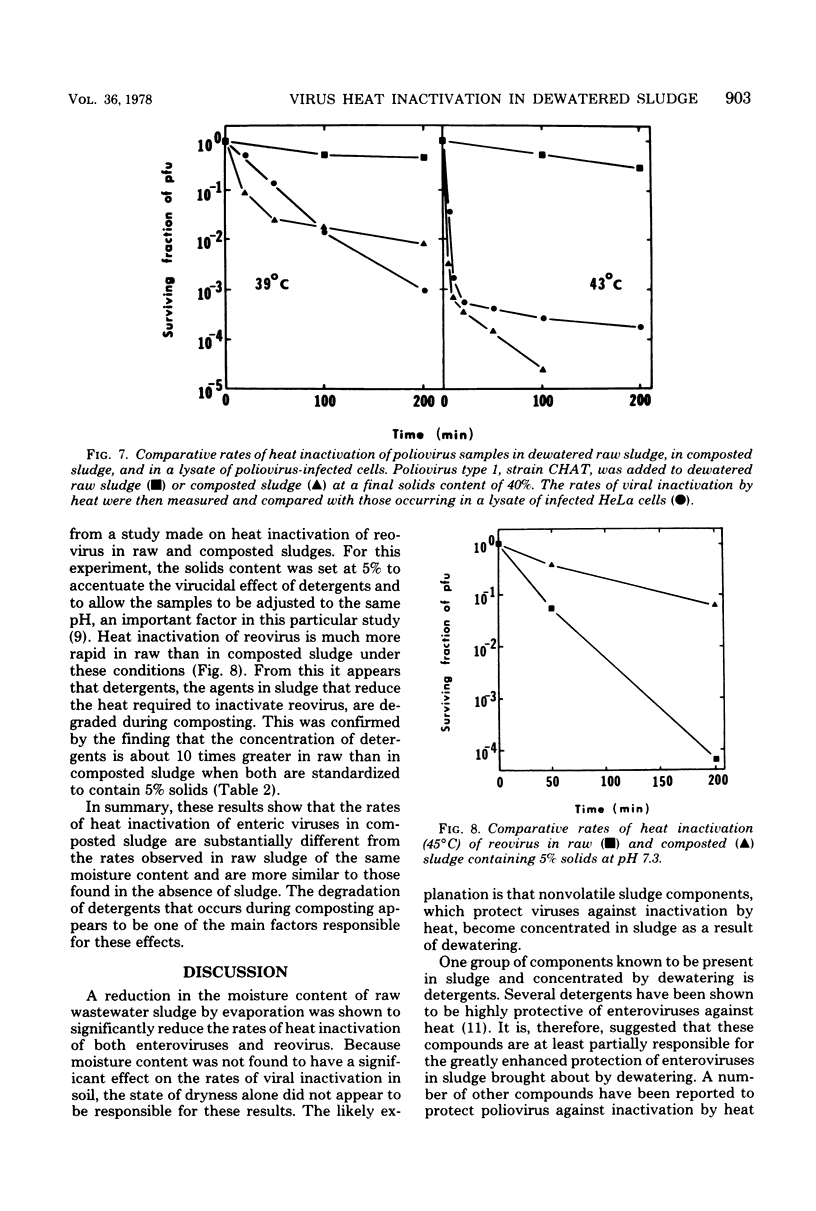
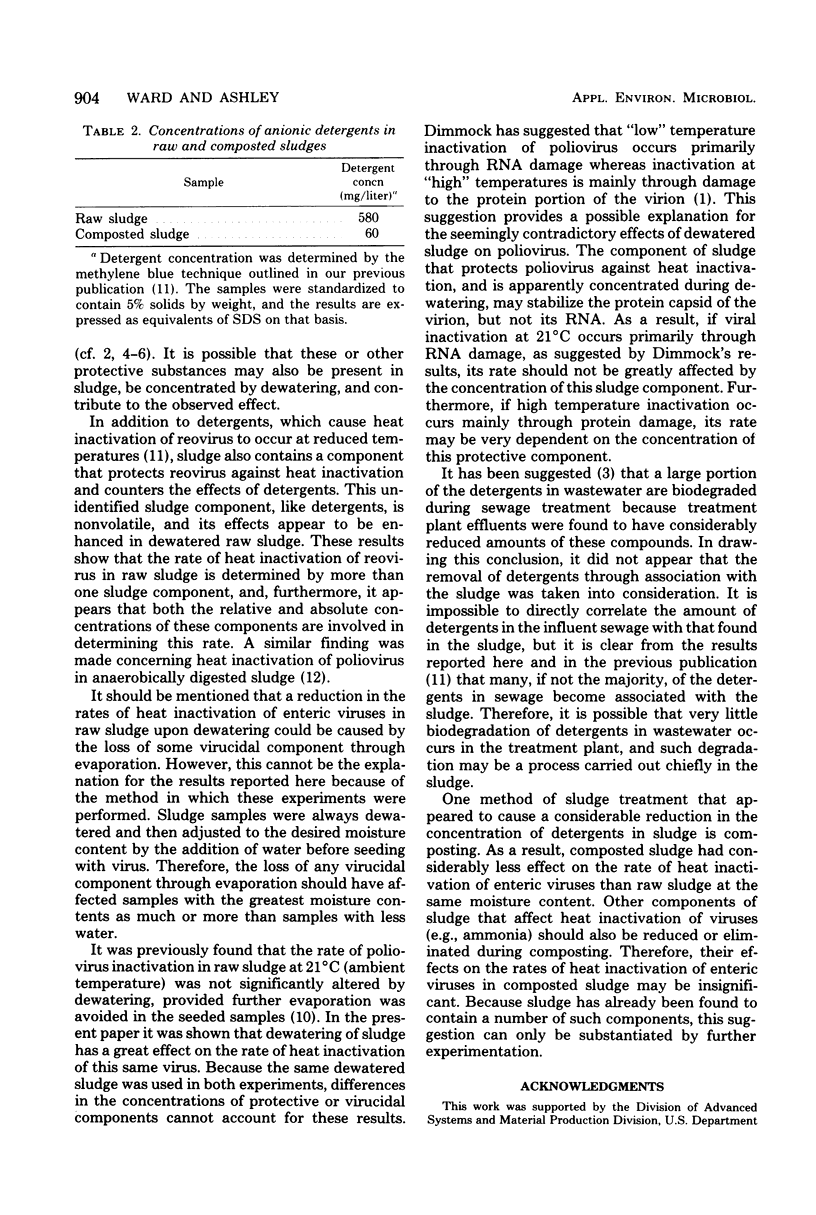
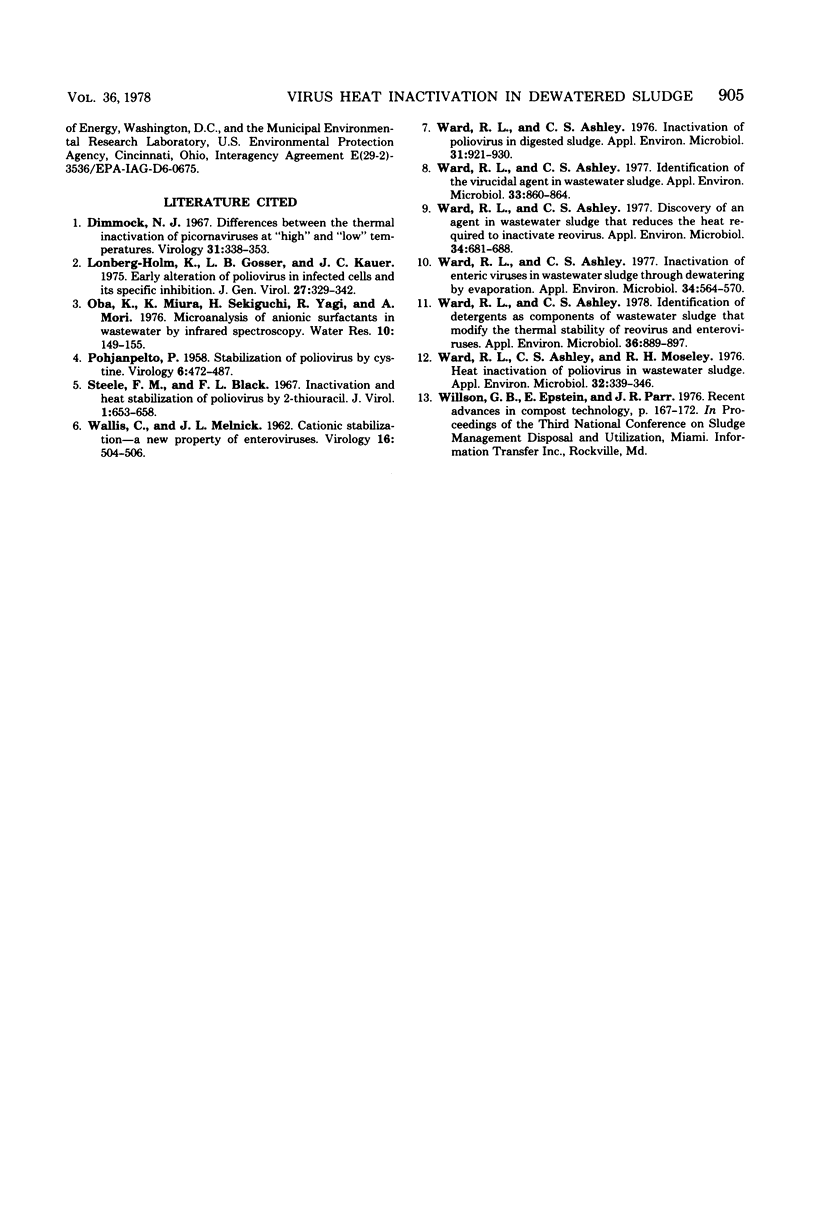
Selected References
These references are in PubMed. This may not be the complete list of references from this article.
- Dimmock N. J. Differences between the thermal inactivation of picornaviruses at "high" and "low" temperatures. Virology. 1967 Feb;31(2):338–353. doi: 10.1016/0042-6822(67)90179-1. [DOI] [PubMed] [Google Scholar]
- Lonberg-Holm K., Gosser L. B., Kauer J. C. Early alteration of poliovirus in infected cells and its specific inhibition. J Gen Virol. 1975 Jun;27(3):329–342. doi: 10.1099/0022-1317-27-3-329. [DOI] [PubMed] [Google Scholar]
- POHJANPELTO P. Stabilization of poliovirus by cystine. Virology. 1958 Oct;6(2):472–487. doi: 10.1016/0042-6822(58)90095-3. [DOI] [PubMed] [Google Scholar]
- Steele F. M., Black F. L. Inactivation and heat stabilization of poliovirus by 2-thiouracil. J Virol. 1967 Aug;1(4):653–658. doi: 10.1128/jvi.1.4.653-658.1967. [DOI] [PMC free article] [PubMed] [Google Scholar]
- WALLIS C., MENICK J. L. Cationic stabilization--a new property of enteroviruses. Virology. 1962 Apr;16:504–506. doi: 10.1016/0042-6822(62)90234-9. [DOI] [PubMed] [Google Scholar]
- Ward R. L., Ashley C. S. Discovery of an agent in wastewater sludge that reduces the heat required to inactivate reovirus. Appl Environ Microbiol. 1977 Dec;34(6):681–688. doi: 10.1128/aem.34.6.681-688.1977. [DOI] [PMC free article] [PubMed] [Google Scholar]
- Ward R. L., Ashley C. S. Identification of detergents as components of wastewater sludge that modify the thermal stability of reovirus and enteroviruses. Appl Environ Microbiol. 1978 Dec;36(6):889–897. doi: 10.1128/aem.36.6.889-897.1978. [DOI] [PMC free article] [PubMed] [Google Scholar]
- Ward R. L., Ashley C. S. Identification of the virucidal agent in wastewater sludge. Appl Environ Microbiol. 1977 Apr;33(4):860–864. doi: 10.1128/aem.33.4.860-864.1977. [DOI] [PMC free article] [PubMed] [Google Scholar]
- Ward R. L., Ashley C. S. Inactivation of enteric viruses in wastewater sludge through dewatering by evaporation. Appl Environ Microbiol. 1977 Nov;34(5):564–570. doi: 10.1128/aem.34.5.564-570.1977. [DOI] [PMC free article] [PubMed] [Google Scholar]
- Ward R. L., Ashley C. S. Inactivation of poliovirus in digested sludge. Appl Environ Microbiol. 1976 Jun;31(6):921–930. doi: 10.1128/aem.31.6.921-930.1976. [DOI] [PMC free article] [PubMed] [Google Scholar]
- Ward R. L., Ashley C. S., Moseley R. H. Heat inactivation of poliovirus in wastewater sludge. Appl Environ Microbiol. 1976 Sep;32(3):339–346. doi: 10.1128/aem.32.3.339-346.1976. [DOI] [PMC free article] [PubMed] [Google Scholar]


